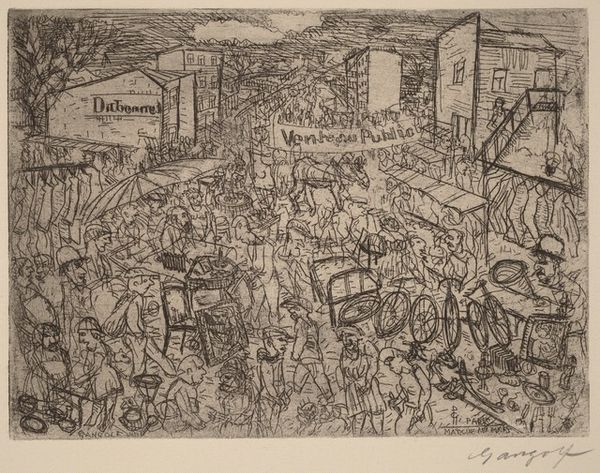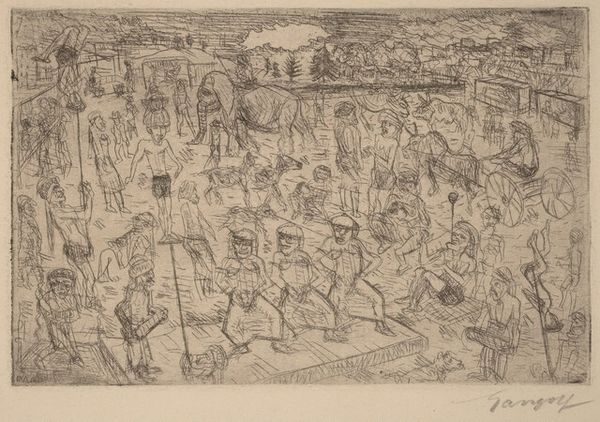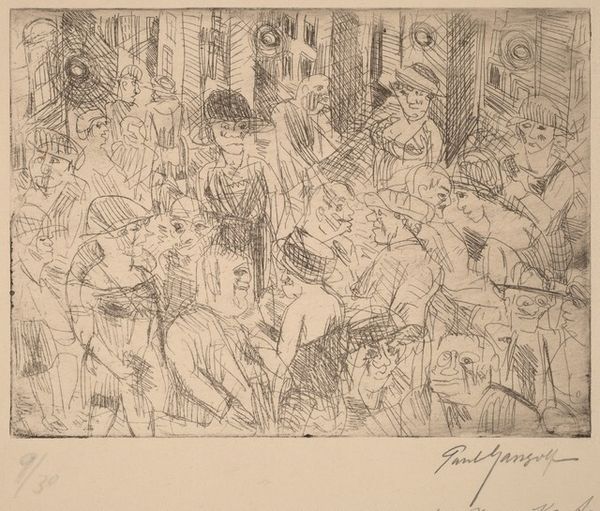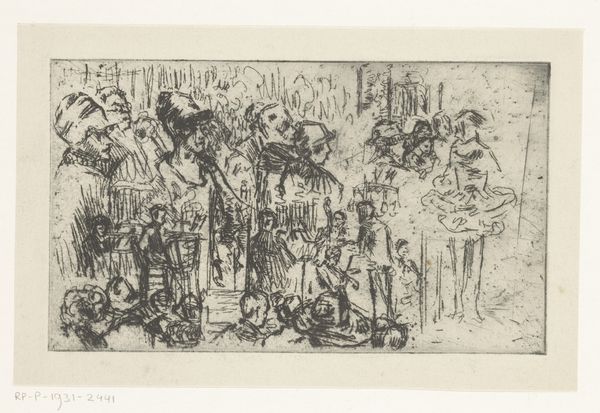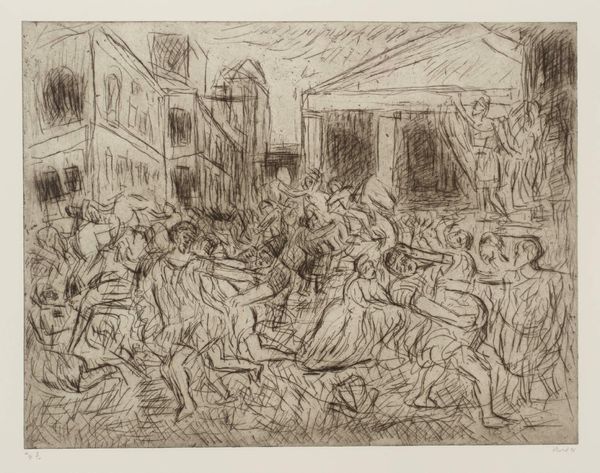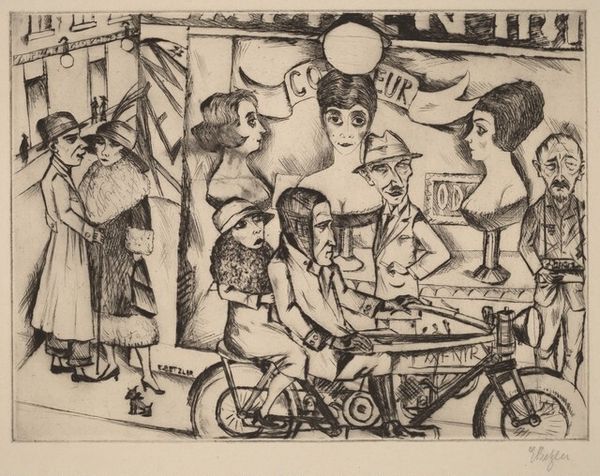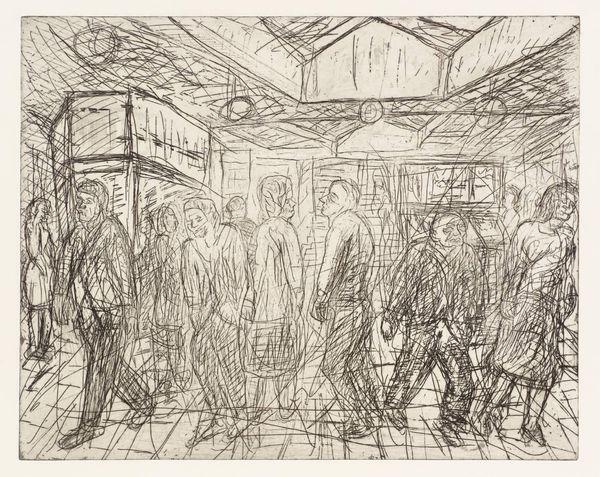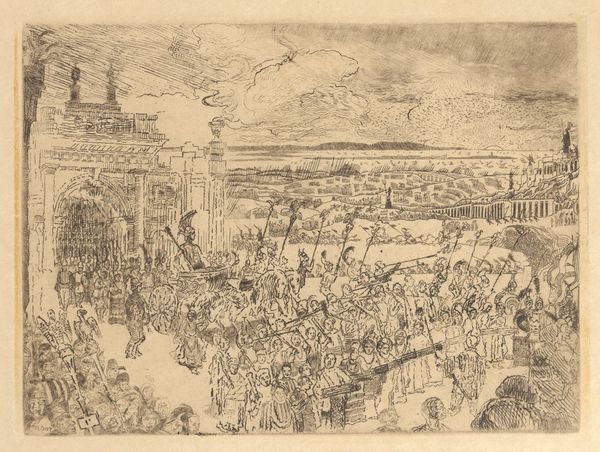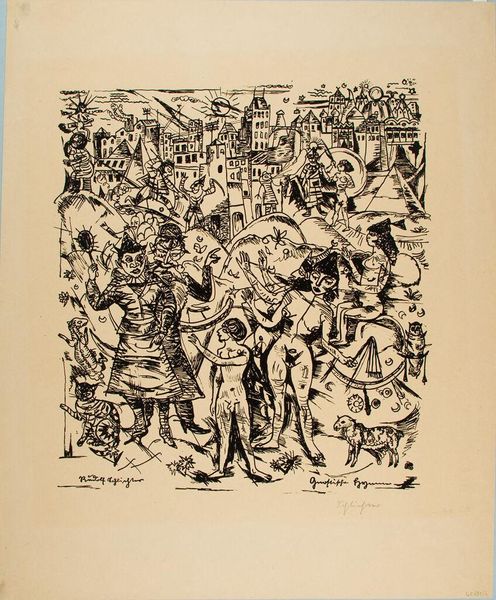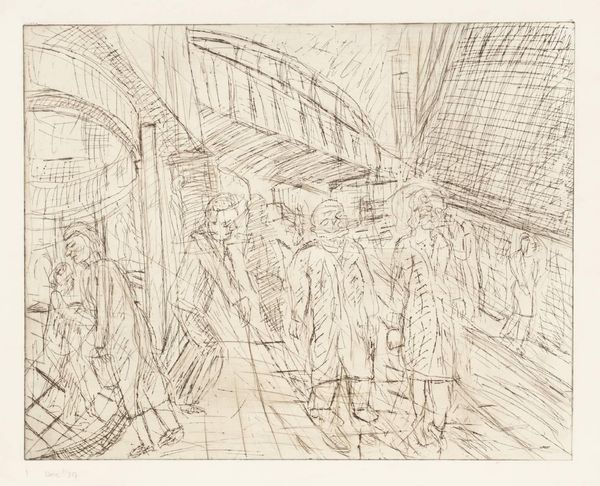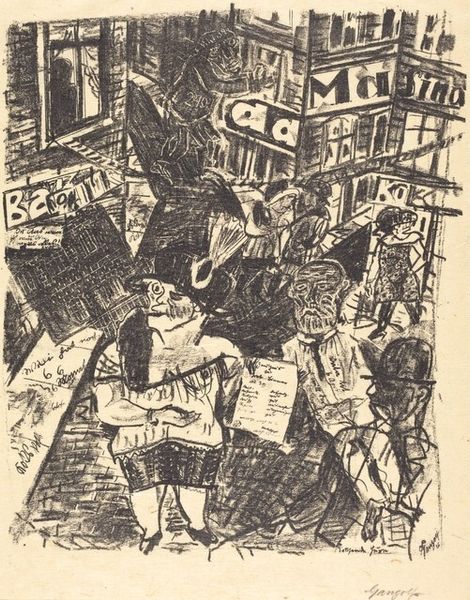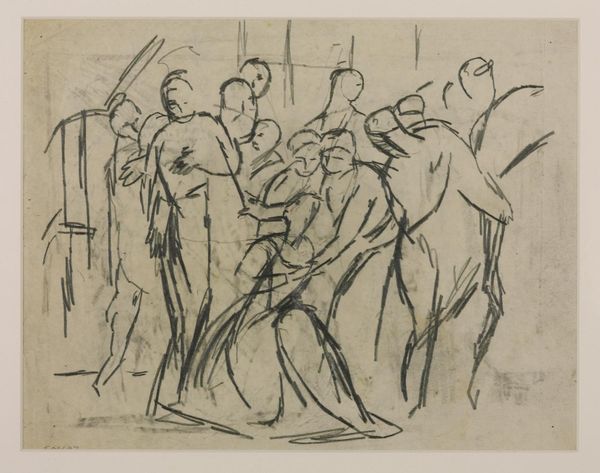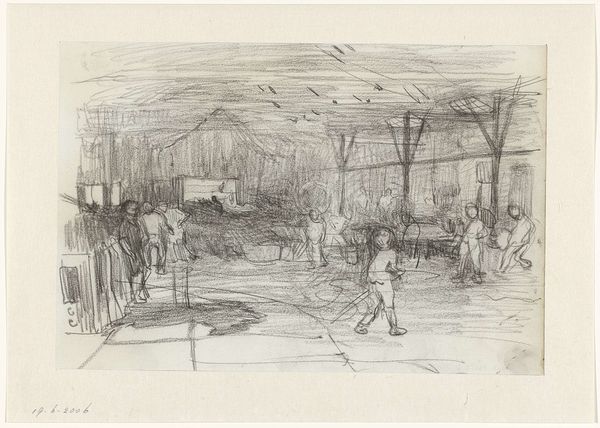
drawing, print, ink, pen
#
drawing
#
ink drawing
#
pen drawing
# print
#
ink
#
pen
#
cityscape
#
realism
Dimensions: plate: 12 × 15.8 cm (4 3/4 × 6 1/4 in.) sheet: 41.3 × 30.8 cm (16 1/4 × 12 1/8 in.)
Copyright: National Gallery of Art: CC0 1.0
Curator: Immediately, I'm struck by the density of lines, an almost frenetic energy conveyed in this monochromatic scene. It feels chaotic, yet compelling. Editor: This is Paul Gangolf's "Porte d'Orleans," a pen and ink drawing completed around 1922. As a print, its reproduction allowed a wider distribution of this intense urban snapshot. Gangolf really captures the freneticism you mention; look how he represents this major intersection. Curator: That name, Porte d'Orleans... even printed on the small sign in the artwork it gives it a mythical meaning like it's the gateway to Orleans but through what? Editor: It certainly seems symbolic beyond a mere geographic marker. The period is critical; the 1920s saw mass migration to cities, reshaping them and daily life. This image encapsulates the transition. Curator: Yes, it’s not just the modern architecture, but the human figures themselves. They seem almost... anxious? Gangolf's choice to render the people in such a way reflects how individuals adapt within changing social systems and spaces. There are several depictions of working-class people with the gate seeming almost oppressive above them. Editor: Or perhaps observational. Note the visible construction; the modern city wasn’t spontaneously built. Gangolf calls our attention to urban transformation—its disruptions and the price of its achievements on the individual's physical form as a cog in the machine of daily transit. Curator: I agree with your interpretation that this image emphasizes the effect of urbanization on the human form! But the piece seems to give agency to the everyday people who inhabit the cityscape in addition to their passive influence on society as a whole. How might this speak to the changing values of art, and specifically drawing as an art medium? Editor: That's the value here. The art world, especially galleries, sought new ways to speak to the masses and integrate them into artistic institutions by featuring subject matter like city life and technological development with which the common man could engage. This realism really put Gangolf on the map. Curator: It makes one consider the continuous push-and-pull relationship between individual and institution, even a century removed from Gangolf's mark. Editor: Exactly! Even now, Gangolf invites the viewers to engage as pedestrians themselves; what symbols still resonate about that social encounter?
Comments
No comments
Be the first to comment and join the conversation on the ultimate creative platform.
